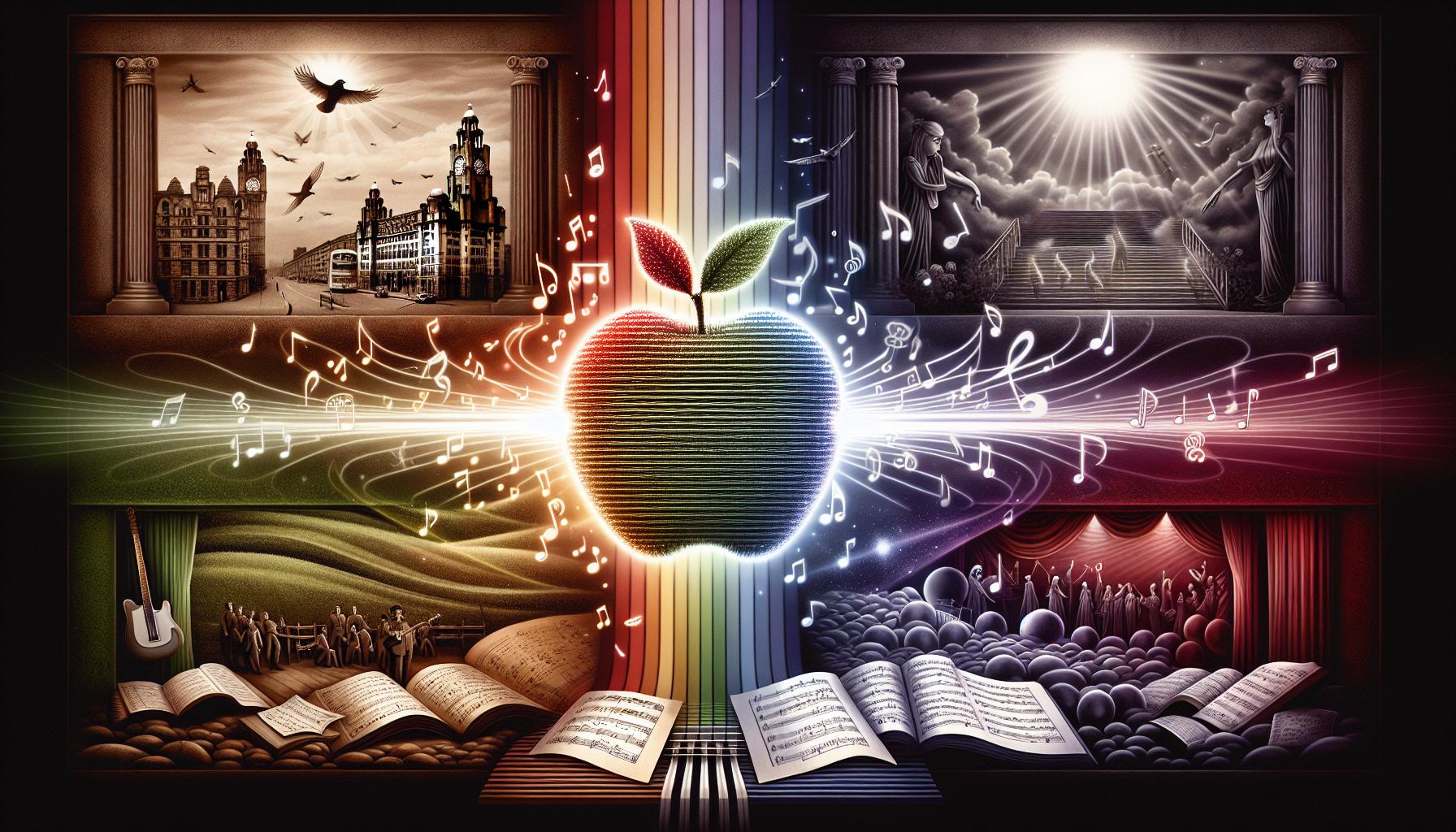If you’re like me, you’re always on the hunt for new ways to spice up your music. One technique that’s caught my attention recently is chromaticism. It’s a fancy word, I know, but don’t let it intimidate you. It’s a musical concept that can add a whole new dimension to your compositions or performances.
Chromaticism, in a nutshell, is the use of notes outside the key you’re playing in. It’s like adding unexpected flavors to a recipe – a dash of this, a pinch of that – to create a unique taste. But how do you use it effectively? And what’s the theory behind it? Let’s dive in and explore these questions together.
Contents
What is Chromaticism in Music?
With our understanding of basic musical terms, let’s dive deeper into the magical realms of chromaticism. Chromaticism in music refers to the use of notes that exist outside the conventional boundaries of the scale. So, if we stick to the ‘recipe’ analogy, chromaticism brings those unexpected flavors to the musical menu that tantalize your ears and emancipate innate emotions.
In a technical sense, a chromatic scale includes all twelve pitches of the octave. It’s like having a palette filled with diverse shades of sound, ready for composers to pick, mix and match to create a unique masterpiece. What makes chromaticism so compelling? It’s the power to add tension, a sense of mystery, or even a soulful lament in a song.
But, and it’s a significant but, the usage of chromaticism isn’t a random note splashing spree. Harmonic balance and melodic continuity are fundamental. You can’t simply punctuate a diatonic piece with chromatically altered pitches without a clear purpose. As a painter would not throw all the colors on a canvas without planning, the same applies to music composition.
So, how does a well-planned use of chromatic notes enhance the song? Think of moments in tracks where you felt a sudden wave of surprise or overwhelming emotion. It could well have been a crafty chromatic note, sliding in subtly, stirring your emotional brew.
Let’s delve into the techniques that musicians employ to integrate chromaticism into their compositions, and how you can too. But remember, it’s not just about pushing boundaries; it’s about understanding why and how chromatic notes interact with the diatonic framework to evoke emotional responses from listeners.
Let’s move onward to explore the nitty-gritty of the strategies employed in using chromaticism effectively. From the simplest to the most complex, every method has a role to play in creating sound hues that paint an evocative soundscape.
The Theory Behind Chromaticism

Stepping into the theory behind chromaticism, it’s clear that it’s more than just some random collection of notes. Chromaticism originates from the Greek word ‘Chroma’ meaning ‘color’. It’s the musical equivalent of splashing a canvas with contrasting and vibrant colors. It adds depth and emotional intensity to a piece of music, painting an aurally vivid picture.
Let’s delve into the concepts of diatonic and chromatic scales. The former is a seven-note scale comprised of five whole steps and two half steps, forming the backbone of much western music. The chromatic scale, on the other hand, contains all twelve notes within an octave.
When incorporating chromaticism into music, it’s not merely using any, or all twelve notes at will. It’s selectively introducing non-diatonic notes that effectively enhance the harmonic interest of the composition. In practical terms, it could be a smooth chromatic progression where the melody glides semi-tonally, or it could be a jarring deviation from the expected harmonic path.
For clarity, let’s look at a few facts about the chromatic scale:
| Fact | Description |
|---|---|
| Full Octave | Has 12 pitches, each a half-step apart |
| Improvisation Tool | Used in jazz and blues for improvisation |
| Mastering Difficulty | Harder to master due to lack of a distinct tonal center |
On an additional note, tonality plays a significant role in the effective use of chromaticism. The sounds should convey dissonance and tension, making the listener crave the relief of resolution. It’s a delicate dance between expectation and surprise, tension and release. Balance is key and a successful chromatic composition walks this tightrope with poise and precision.
Understanding chromaticism in music requires knowledge, practice, and most importantly, an ear for balance. Skillfully added, it can be the stroke of genius that lifts a piece from ordinary to extraordinary.
Common Uses of Chromaticism in Music
Diving deeper into our discussion on chromaticism, let’s explore the common uses of this technique in music and understand why it plays such a pivotal role in creating memorable compositions.
A vital role of chromaticism is to create tension. This color in music has the power to make the audience hold their breath, awaiting the sweet release of resolution. It’s like being on a roller coaster where the thrilling ascent is equally as important as the exhilarating fall.
Chromaticism isn’t only about creating tension. It’s also a tool for enhancing melodic interest. With the inclusion of non-diatonic notes, I sometimes introduce unexpected twists in my compositions. These surprise elements refresh the listener’s ear and break the monotony of predictable musical lines.
Another common use of chromaticism is in modulation—a method composers use to pivot smoothly from one key to another. Including chromatic notes can ease this transition, creating a seamless flow between different parts of a song.
Last but not least, the application of chromaticism can lend a piece a distinct aesthetic quality. It could be used to reflect powerful emotions like sadness, joy, or apprehension, effectively enhancing the expressive potential of the song.
Tips for Effectively Using Chromaticism
In this quest to comprehend and master the art of chromaticism, I’ve cultivated a set of useful pointers. These tips on how to use chromaticism effectively will help you add color, augment intensity, and stimulate emotional responses in your compositions.
Intentionality is Crucial
Firstly, intentionality in the use of chromaticism matters. You shouldn’t just toss in a heap of chromatic notes for the sake of it. Be mindful of your song’s theme, mood, or story – using chromaticism should always bolster these elements.
Master Your Scale and Key
To effectively play with color using chromatic notes, you need to know your scale and key inside and out. A strong understanding of the diatonic framework provides a safety net as you venture into the realms of distortion and alteration.
Use Chromatism to Drive Emotions
One of the most powerful weapons in a musician’s arsenal is the ability to evoke emotions through their art. Used skillfully, chromatism can manifest feelings of suspense, surprise, or overwhelming emotion. Essentially, chromatism grants access to a broader emotional palette.
Exercise Restraint
Yes, chromaticism introduces an exciting sonic complexity, but restraint is essential. Resist the temptation to overuse it, as it can easily overwhelm the listener and strip the original tonality of its strength. It’s like making a good stew – too many ingredients and you don’t taste anything!
Experiment and Practice
Last but not least – experiment and practice. Chromaticism isn’t a formula but rather a tool. So, pick it up, play around with it and see what works best for you.
In my ensuing paragraphs, I’ll delve deeper into how chromaticism can be used to alter the traditional chord progressions turning them into a new colorful world. I’ll also shed light on how the concept of tonality creates a myriad of possibilities when coupled with chromaticism, making the compositions more exciting.
Examples of Chromaticism in Popular Music

It’s time to turn our theoretical understanding of chromaticism into practical knowledge. In this section, I’ll demonstrate the use of chromaticism in mainstream music. Popular music has frequently used chromatic techniques to create unexpected, yet complimentary progressions. These instances illustrate the adaptability and versatility of chromaticism.
Think about the Beatles. Their song “Penny Lane” presents a fantastic example of chromaticism. In the chorus, you’ll find chromatic descending lines over which they sing the melody. It’s not traditional, it’s not straightforward, but it is effortlessly iconic.
Another notable example is “My Funny Valentine” by Richard Rodgers and Lorenz Hart. This jazz standard iconically uses chromatic movement in the melody line, creating an element of surprise to seduce listeners.
Moving towards the world of Rock, let’s talk about Pink Floyd. Their usage of chromaticism can be found in songs like “Comfortably Numb”. They managed to use chromatic sequences to induce a sense of eeriness and discomfort, complementing the song’s theme.
Below is a quick and simplified summary of the songs and their key chromatic element:
| Song | Artist | Key Chromatic Element |
|---|---|---|
| Penny Lane | The Beatles | Chromatic descending lines in chorus |
| My Funny Valentine | Richard Rodgers and Lorenz Hart | Chromatic movement in melody line |
| Comfortably Numb | Pink Floyd | Use of chromatic sequences |
Now that we’ve familiarized ourselves with some popularly recognized chromatic pieces, I urge you to listen to these at your leisure. Their effective application of chromaticism can inspire you to distinguish your compositions and push your creative capabilities to uncharted territories.
Next, let’s delve into how you can incorporate chromaticism into your own music. By understanding the ‘why’ and ‘how’ of using chromaticism to alter traditional chord progressions, you can craft pieces that are distinctly yours. Remember, practice is key and experimentation is the way forward.
Conclusion
So, we’ve journeyed through the vibrant world of chromaticism, understanding its role in music and how to effectively use it in our creations. We’ve seen how it’s not just about adding color, but also about driving emotions and making our compositions stand out. But remember, it’s all about balance and not overdoing it. We’ve also delved into iconic songs that have masterfully used chromaticism, showing us its versatility. These examples aren’t just for listening pleasure, they’re your guide and inspiration. Now, it’s your turn to experiment and practice. Let your creativity flow and don’t be afraid to step out of the box. With understanding and intentionality, you can incorporate chromaticism into your music and truly make it your own. Who knows, your composition might be the next great example of chromaticism in popular music!
